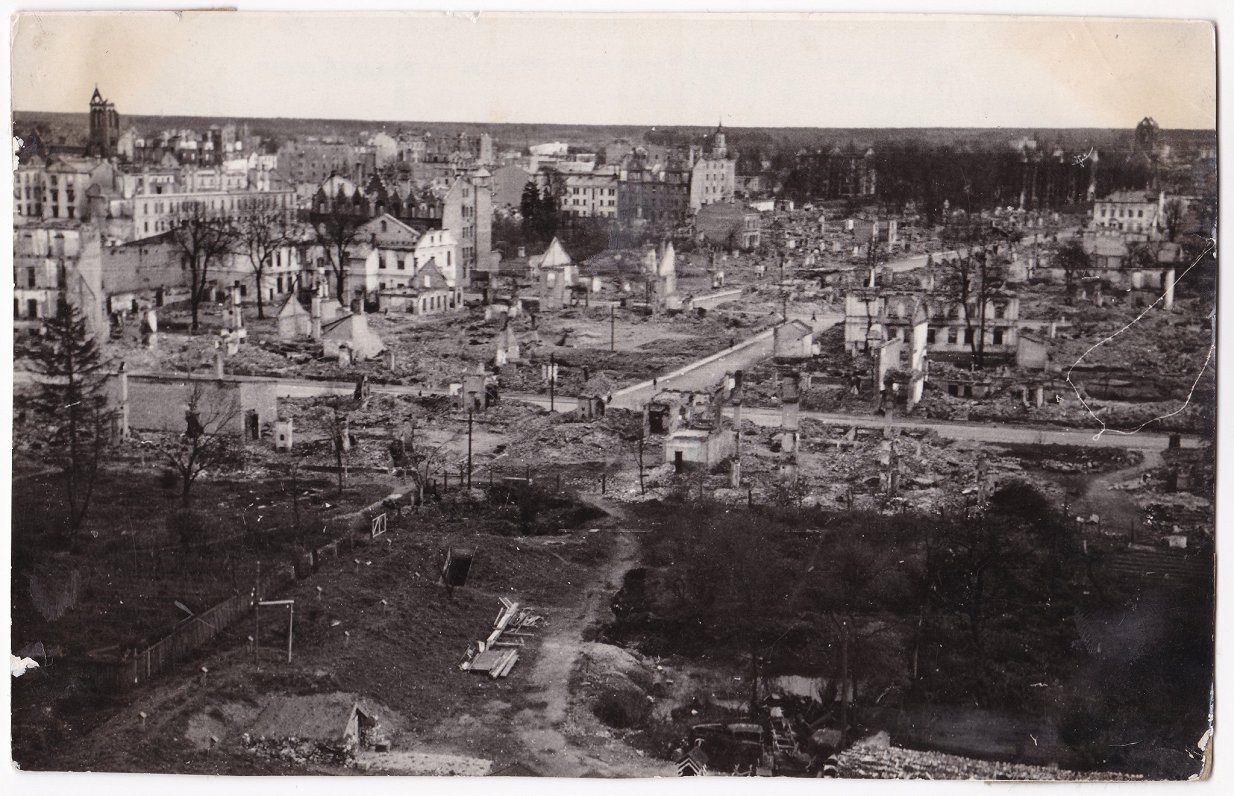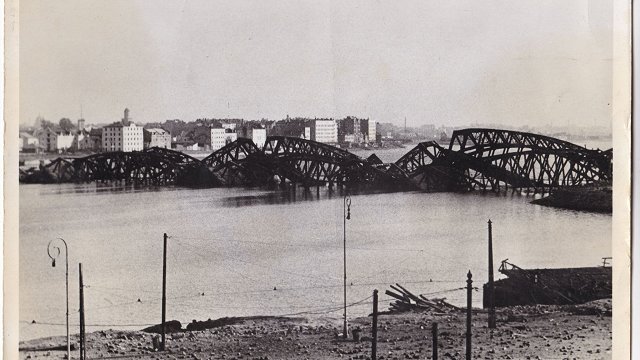In contrast to the “myth of the Great Patriotic War”, including the “liberation “of the Baltic States in 1944-1945 as an integral part of it - cultivated by the Soviet propaganda for decades and still cherished by the Russian Federation, the war-time reality tells a different story.
It is a story of the crimes perpetrated by two totalitarian powers – National Socialist Germany and the Soviet Union – that not only broke the destinies of many thousands of Latvian people but also irreversibly destroyed the buildings, as well as the cultural and historical heritage of several Latvian towns. For Soviet and German supreme commanders, Rēzekne, Gulbene, Jelgava, Valmiera, Bauska, Rīga, and other towns were only a temporarily advantageous card in their “war games”, which took place at the expense of civilians and historical townscape.
The article is part of a series "Popular myths of the 20th-21st century Latvia"
The publication has been prepared within the framework of the State Research Programme project “Navigating the Latvian History of the 20th-21st Century: Social Morphogenesis, Legacy and Challenges” (No. VPP-IZM-Vēsture-2023/1-0003)
The German Blitz-Krieg and the first strikes
The first act of the crime transpired in the summer of 1941 when Germany invaded the Soviet Union, including the territory of Soviet-occupied Latvia. Already on the first day of the war, June 22, German aviation bombed Liepāja; battles against the defenders of the town raged for almost for a week, razing the waterfront and destroying at least 40% of the historical buildings in the town’s center.
At the onset of the Germany-USSR war, considerable damage was also wrought on the historical center of Riga, the razing of the Town Hall Square and ruining of the spire of St. Peter’s Church serving as a symbol of battles for Rīga that altogether destroyed around 10% of the historical buildings in the Old Town. Photographs of the fire-engulfed spire of St. Peter’s Church have become a visual epitome of the devastation brought about by the Second World War. Still today, we hear contradictory versions as to why the tower burnt down and which of the warring parties is to be blamed for the fire.
In their memoirs, some eyewitnesses mention having seen Soviet KGB officers carrying fuel cans at the church entrance, some others maintain having heard German officers’ command to aim specifically at the church tower. Such myths were cultivated by both occupation rules, after the end of the warfare insisting that all responsibility for the destruction rested exclusively on the other side. The truth often was simpler – towns were ravaged during battles, sometimes as a result of an unfortunate coincidence.
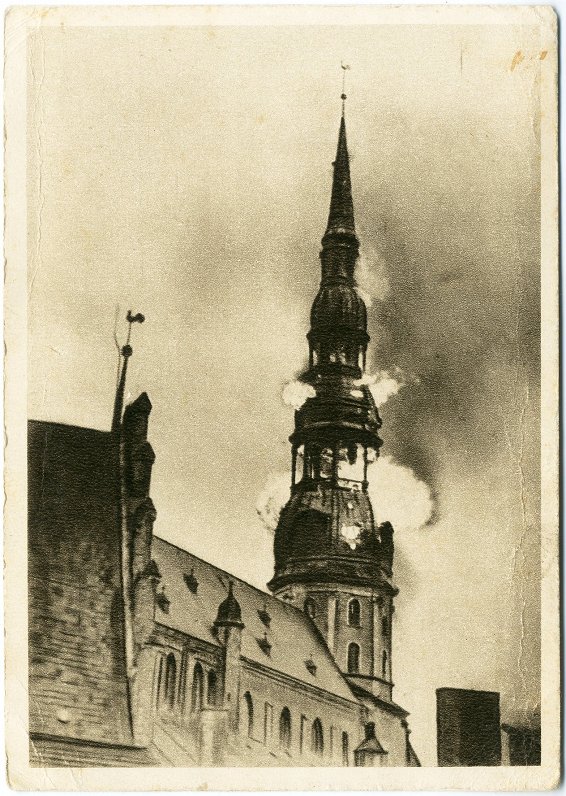
In the summer of 1941, Daugavpils, Jēkabpils, and other towns were battlegrounds of relatively minor battles, however, the success of the German Blitz-Krieg tactics at that point allowed for avoiding long and heavy battles in urban settlements, thus preventing damage to townscapes. At that time, the Soviet defense tactics concentrated on the preservation of its capacities rather than the destruction of the reserves of the German army and strategic buildings. Exception was made for some bridges, the ruining of which delayed the German advance, but it did not change the situation: by July 8, 1941, the German troops had occupied the whole of Latvia’s territory and held it for the coming three years. The factor of a ‘stable’ occupation postponed damage to townscapes, but neither of the aggressors hesitated to inflict it, as soon as it became possible again and military needs required it.
Thousands of tons of Soviet aerial bombs
The second and most devastating phase in the destruction of Latvian townscapes began in the spring of 1944 when the front line approached Latvia’s territory, which thus became reachable for the Soviet long-range aviation, which at that point had gained a certain freedom of action. The Soviet air raids served a concrete military-strategic goal: to destroy the transport (railway) communications and the points of concentration of the enemy’s troops and military equipment at the rear of the German army as well as to support the offensive operations launched by the Soviet land forces.
Within approximately half a year, from early April to mid-October 1944 at least eight Soviet long-range aviation divisions carried out at least 81 air raids on 27 Latvian towns and other settlements, dropping altogether 1,740 tonnes of aerial bombs. If we put the data about the air raids on the pre-war railway map of Latvia, we can clearly see that the Soviet side aimed to destroy the major railway junctures to disrupt or considerably restrict the movement and logistics of the German troops. Until October 1944, the Soviet aviation units focused on bombing the railway junctures in the eastern part of Latvia: Gulbene (which was the target of no less than 475 tonnes of aerial bombs), Rēzekne (at least 357 tonnes) and Daugavpils (at least 285 tonnes).
As the USSR army advanced and gradually occupied Latvia’s territory, railway junctures in the central part of Latvia (Jelgava, Ogre, Rīga, Tukums etc.) and Kurzeme region (Spāre, Liepāja etc.) were also targeted. The Soviet air raids were aimed at a concrete military strategic target, which, if hit accurately, would have destroyed a specific railway infrastructure object, bridge, or airfield. However, considering the possible counteractivity on the part of German air defense and fighters, the air raids were carried out at night which made them very inaccurate and was the main reason why in most cases they inflicted damage on residential buildings, public and religious edifices rather than on railway infrastructure.
Of all Latvian townscapes, it was Rēzekne that suffered most from Soviet air strikes, being targeted at least 11 times from April to July 1944. The bloodiest air raids were carried out on the eve of Easter, on April 6 and 7, when almost 300 tons of aerial demolition bombs and incendiary bombs were dropped on the town, razing more than 65% of buildings and killing up to 100 people. The air raids inflicted damage not only on residential buildings but also on many noteworthy public edifices, such as the People’s Palace, the Teachers’ Institute, the municipal hospital, etc.
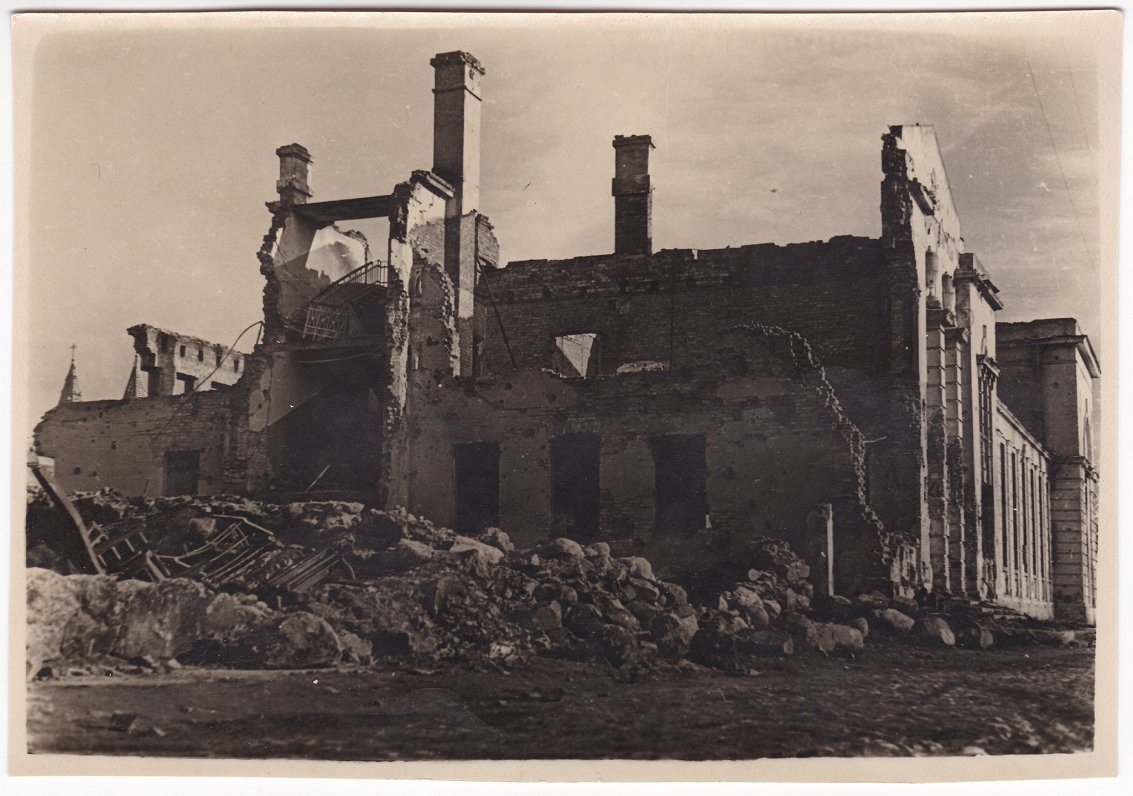
The Soviet long-range aviation inflicted similar scale damage on Gulbene, which in April 1944 alone suffered at least 15 air strikes that again illustrated the insistent but inaccurate efforts of the Soviet aviation to reach its military goals in practice however wreaking the greatest devastation on historical buildings. An especially heavy air strike hit the town on Eastern night, ruining the spire of the Evangelical Lutheran Church, which has not been restored. Many other buildings were also damaged, including the White Manor House and the mill.
The historical centers and strategic objects of Rēzekne, Gulbene, and other towns also suffered from the flames of the German scorched-earth tactics. During their retreat, the German troops blew up many urban sites in order to slow down the enemy’s advance and hamper its industrial production (including electricity generation). However, not all destruction can be attributed to military strategy alone. During their retreat from Rēzekne, the Germans demolished the Town Hall, the Land Bank, the Commercial School, and other buildings. In the small Rūjiena town, the Germans dropped incendiary bombs on many buildings causing a great fire, which destroyed at least 273 edifices.
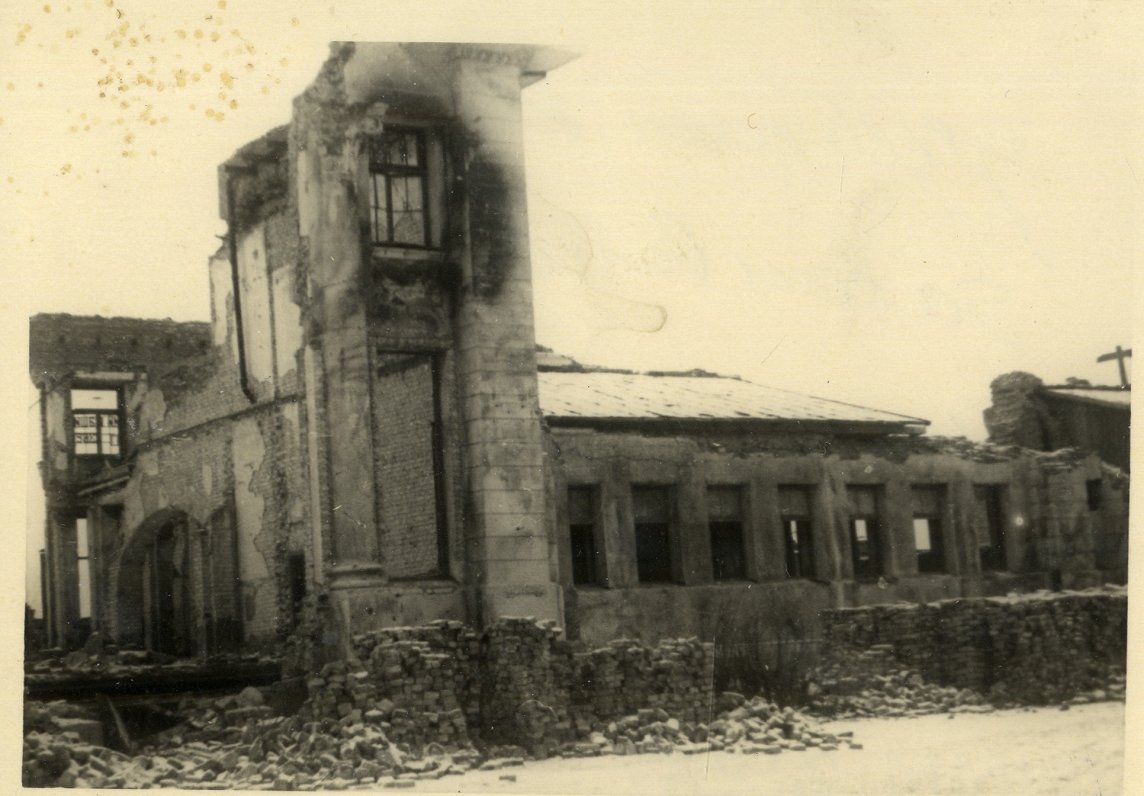
Razing of towns: coincidence or regularity?
A new phase in the destruction of Latvian towns began in July 1944 when the Red Army crossed the Latvian border. The first battles in the eastern frontier were relatively mild as, with only a few exceptions, the German units were retreating from the Latgale region and engaged in clashes only to detain the enemy’s advance. In the Zemgale region in late July 1944, the situation was different: after the defeat of the German army group Mitte, the mechanized units of the Red Army launched an offensive into the region. While in Latgale the Germans could choose to engage in detention clashes, the loss of Zemgale would have resulted in another siege, thus there they needed decisive battles and it was the towns that became a sort of ‘fortresses’, which had to be defended till the last German – or Latvian - soldier.
The first Zemgalian town to become a battlefield was Jelgava, which of all Latvian towns suffered the most and was changed beyond recognition.
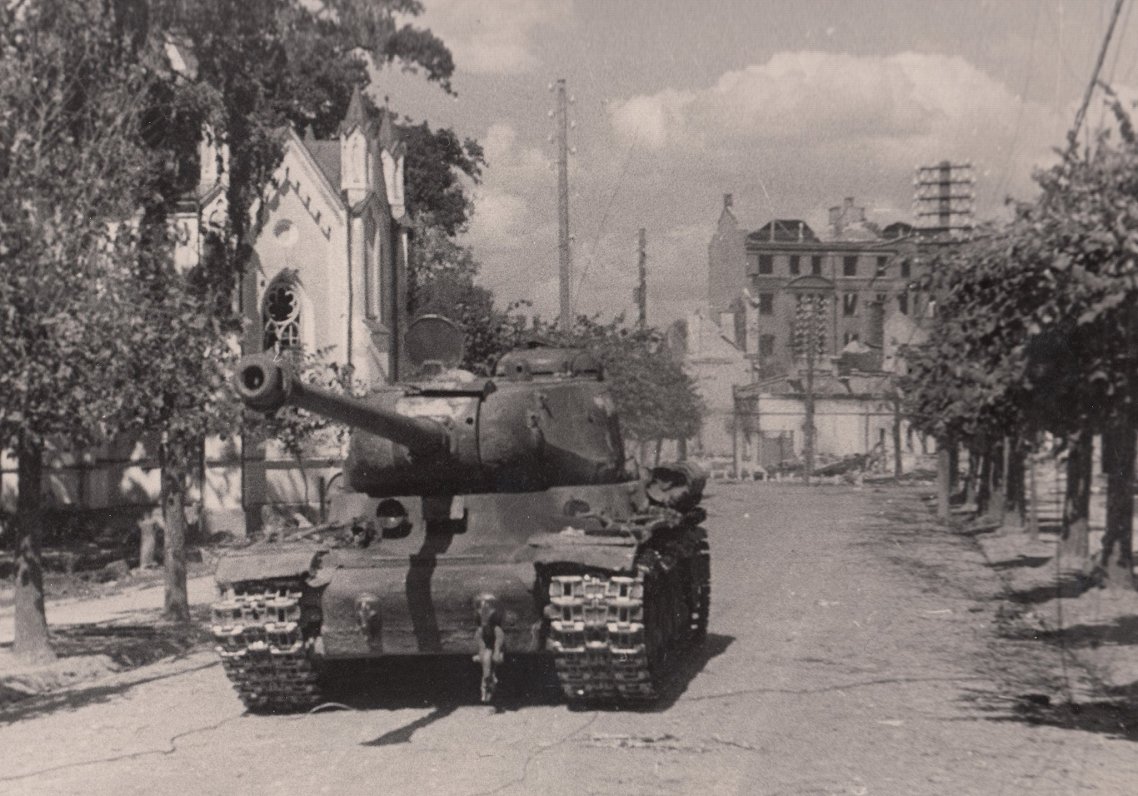
On July 28, 1944, units of the Red Army 3rd Guards Mechanized Corps approached the southern outskirts of Jelgava. In the course of three previous battles, the Soviet troops had seized Lithuanian towns Sauliai and Joniškis through similar surprise attacks that gave the Soviet commanders a reason to hope for an easy success in Jelgava as well. However, things turned out differently. Over three days of heavy battles the mechanized brigades of the 7th and 9th guards as well as the 279th and 347th riflemen division, which arrived on July 30, turned the town into a battle-field.
Jelgava was defended by various German units, including units of the 15th Latvian Training and Reserve Brigade of the 15th Waffen Grenadier Division of the SS. The Red Army seized Jelgava on August 1, but already on August 4 the German 93rd Infantry Division launched a counter-attack across the River Lielupe and quickly reconquered the town. On August 7 the Soviet forces launched another offensive on the town. Jelgava was the only town in Latvia that changed hands four times in two weeks, which was the main reason why it was razed to the ground. Significantly, the 3rd Guards Mechanized Corps in their report admitted that the offensive on Jelgava had been a miscalculation as the resulting loss of 144 killed and 443 wounded soldiers and 22 shot tanks considerably impaired the Corps’ military capacity.
During land battles, it was artillery fire that wrought the greatest damage to towns. In the final phase of the Second World War, the tactics of the USSR army dictated massive artillery strikes prior to the town’s storming by land forces. If a town happened to stand in the way of an offensive, nothing was left of it. In the early morning of September 23 1944, the commander of the Soviet 183rd Tank Brigade, Lieutenant Colonel Mikhail Kovalev, reported that he was in Valmiera, thus creating a wrong impression that it had been seized already. In the evening when the ‘lie’ came to light, the Lieutenant Colonel commanded the 128th Separate Guards Mortar Division, which was armed with eight Katyusha rocket systems, to open fire on the surroundings of the bridge over the Gauja in Valmiera to at least restrict the movement of the German troops across the river. As a result, 640 rockets exploded in the center of the town in a short space of time, almost completely razing the oldest part of Valmiera.
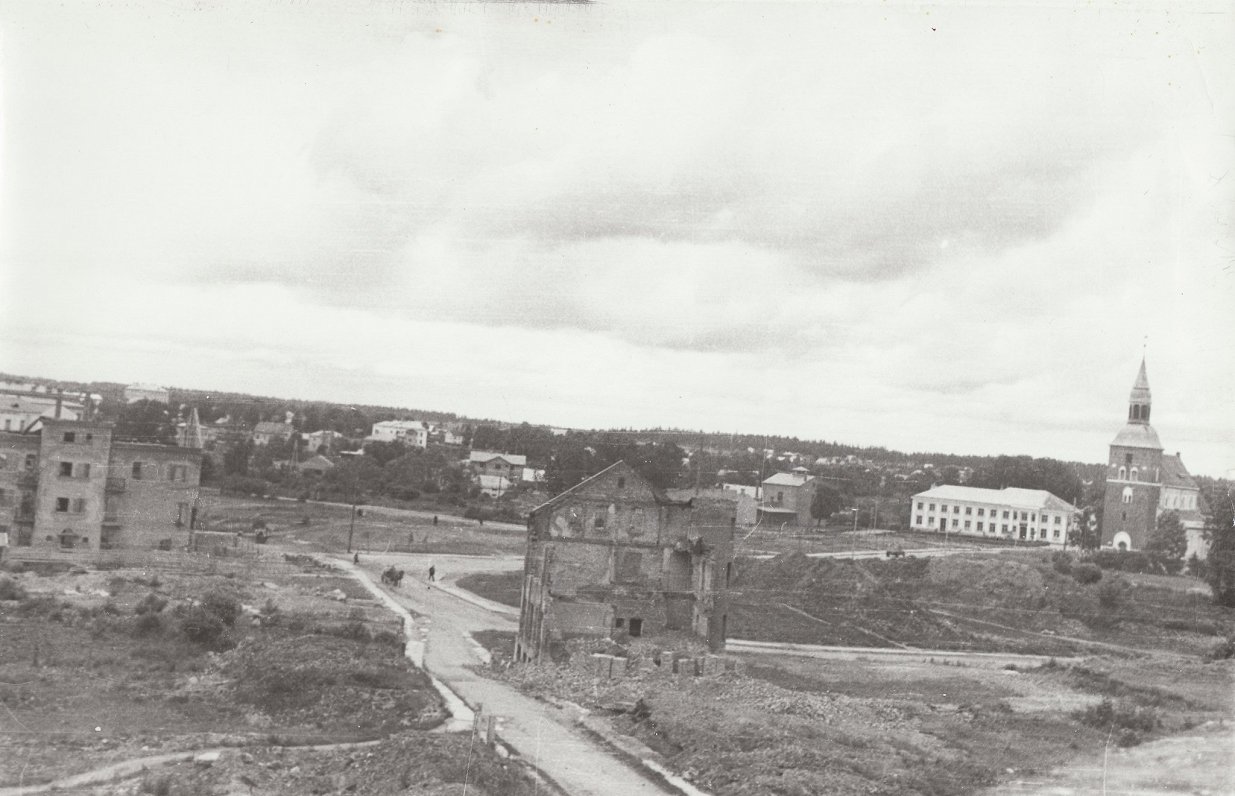
In the Latvian capital Rīga, the situation was different. It was lucky enough to be spared serious damage as on the evening of October 11, 1944, the German Army Group Nord ordered the retreat from the city without a battle. The Red Army units did not know this order and planned the capture of Riga reckoning with resistance. The 285th Separate Motorized Special Tasks Battalion of the Red Army's 3rd Baltic Front crossed Lake Ķīšezers with American amphibious assault vehicles and meeting no real resistance from the part of the Germans, reached the Daugava embankment by the evening of 13 October, creating a myth of a bold maneuver, which had decided the outcome of the battle.
The ravaging of Latvian towns continued even after the fall of Riga in the Soviet hands and the establishment of the Courland front in October 1944. The German-controlled Liepāja was hit especially hard; different Soviet aviation units continued bombing the town intensively till the end of the war. According to the reports of these units, more than 1713 aerial bombs were dropped on Liepāja in the last months of 1944. This is approximately as much as on the entire Latvian territory before that.
The war-caused fractures in Latvia’s urban landscape
For the totalitarian USSR and German rules, the cultural, historical, and industrial heritage of Latvia and its preservation was an inconsequential aspect as the decisive factor was military considerations: the restriction of the enemy’s military capacity and reserves, conquest of square meters and kilometers of territory or the use of the scorched earth tactics.
The two powers used Latvian soil territory as a military-strategic firing ground where bridges had to be destroyed to hinder the enemy’s advance, buildings served as cover and the bombing of the historical parts of towns could be written off as “collateral damage” in the name of greater strategic goals. Towns perished in the crossfire of the goals set by the German and Soviet political leadership and army generals. It can be called "unpremeditated murder". The destruction of Rēzekne, Gulbene, Jelgava and other Latvian towns, perhaps, should be evaluated in the context of the 1949 Geneva Convention relative to the Protection of Civilian Persons in Time of War, assessing whether the military goals achieved through the ravaging of the towns were commensurable with the losses incurred to their historical buildings and civilian residents.
As a result of the full-scale invasion launched by Russia in February 2022, many Ukrainian cities and towns have been razed to the ground which makes us wonder how much (or little) we have learned from the history of the Second World War, when many buildings of cultural and historical value were destroyed, people were killed, their environment was transformed and material values were annihilated. This theme is the focus of an open-air exhibition 1944 – The War-Caused Fractures in Latvian Urban Landscape, elaborated as part of a State Research Programme for the study of the 20th-21st century history of Latvia. The exhibition can be viewed in Rīga from May 8. Later it would be visible in the town squares of Rēzekne, Gulbene, Salaspils, Jelgava, Bauska, and Valmiera.
